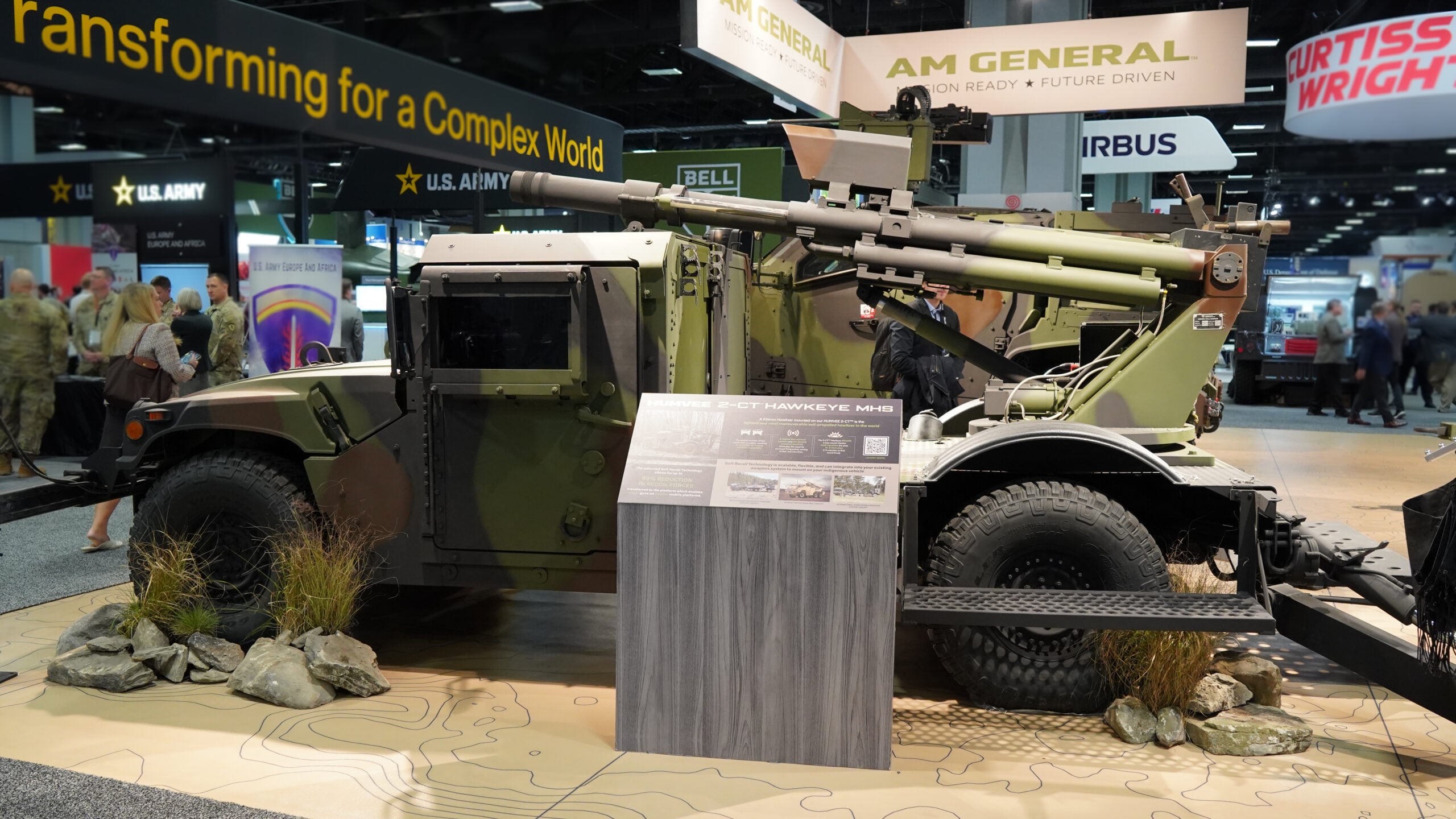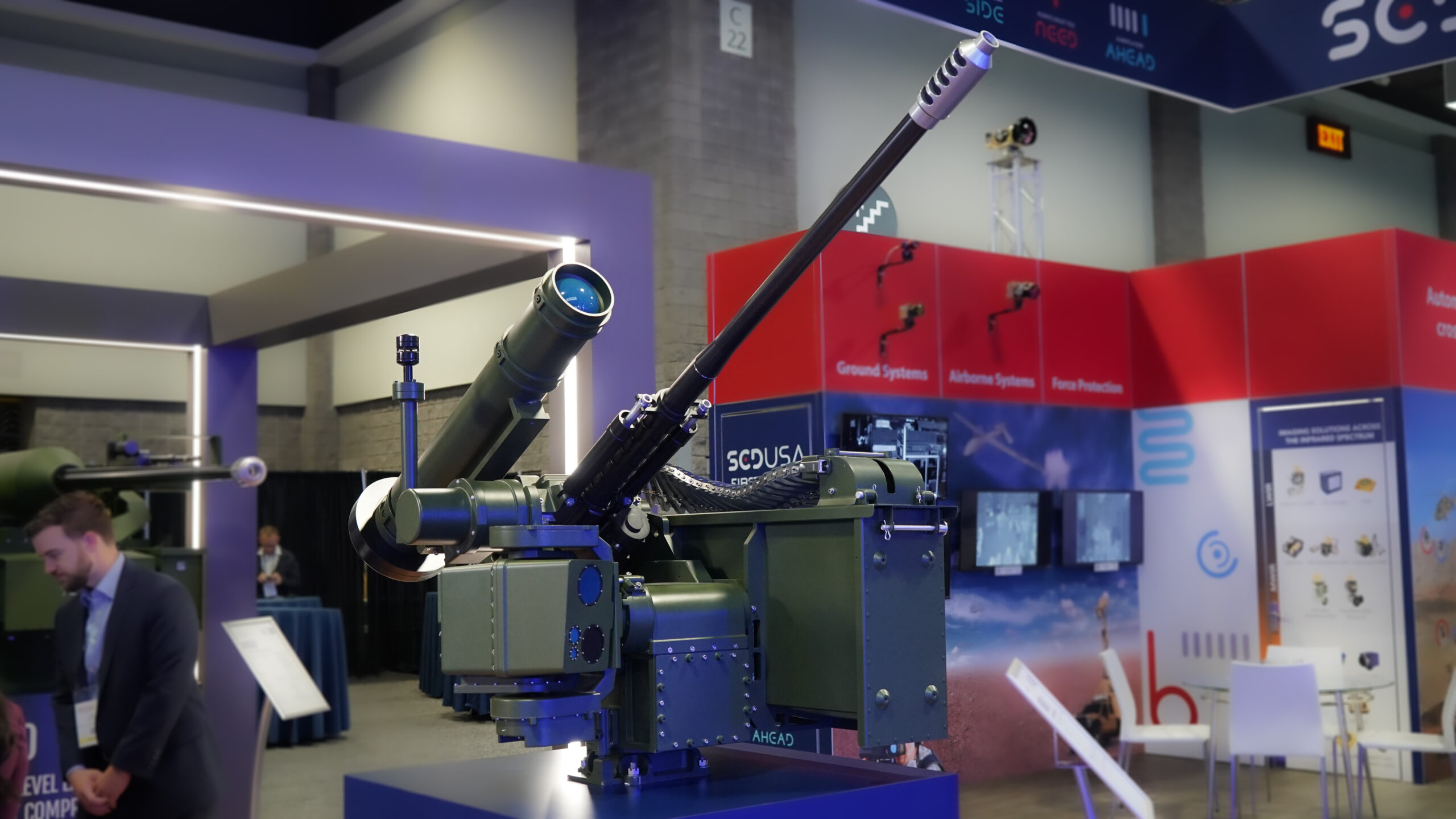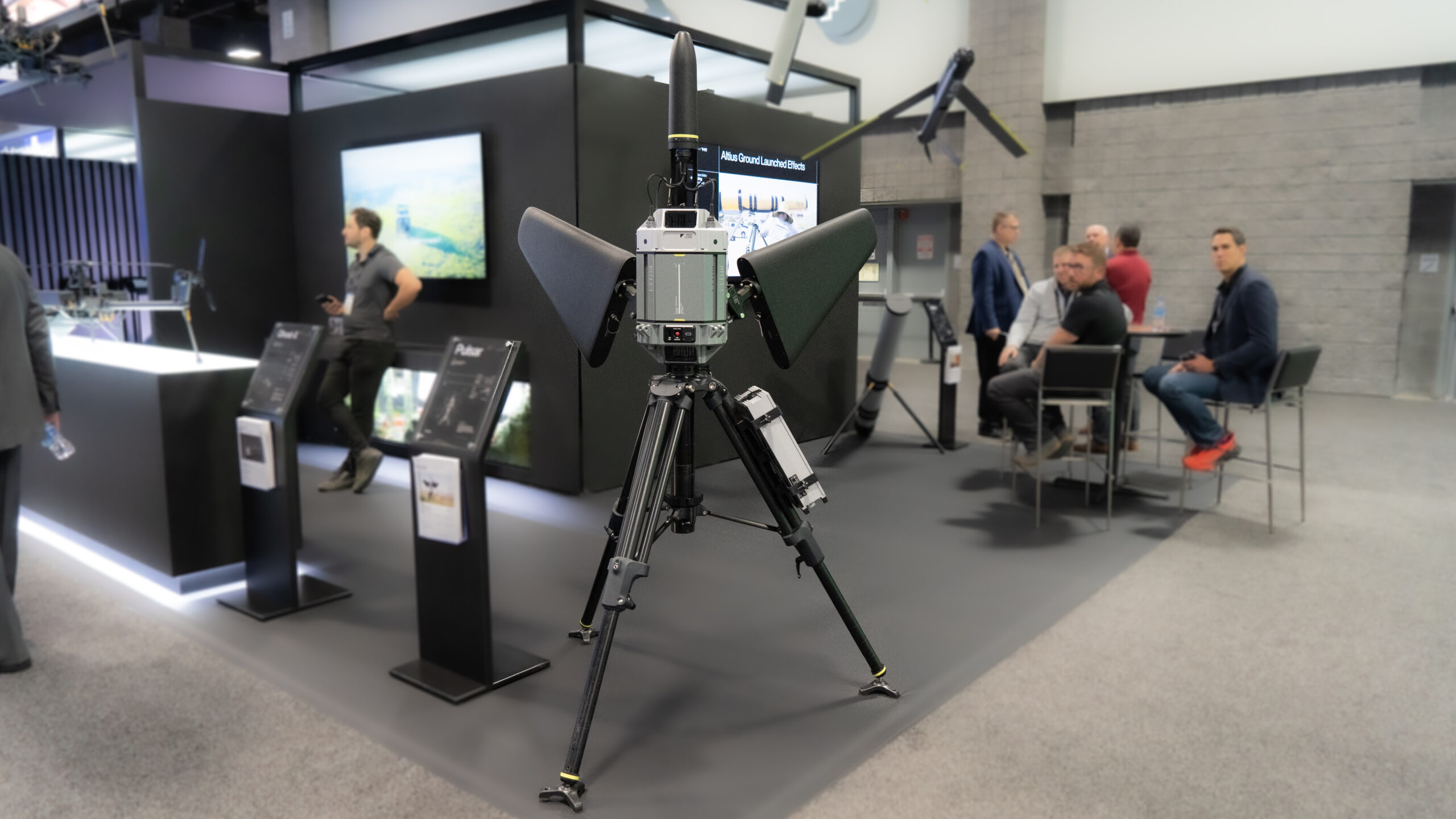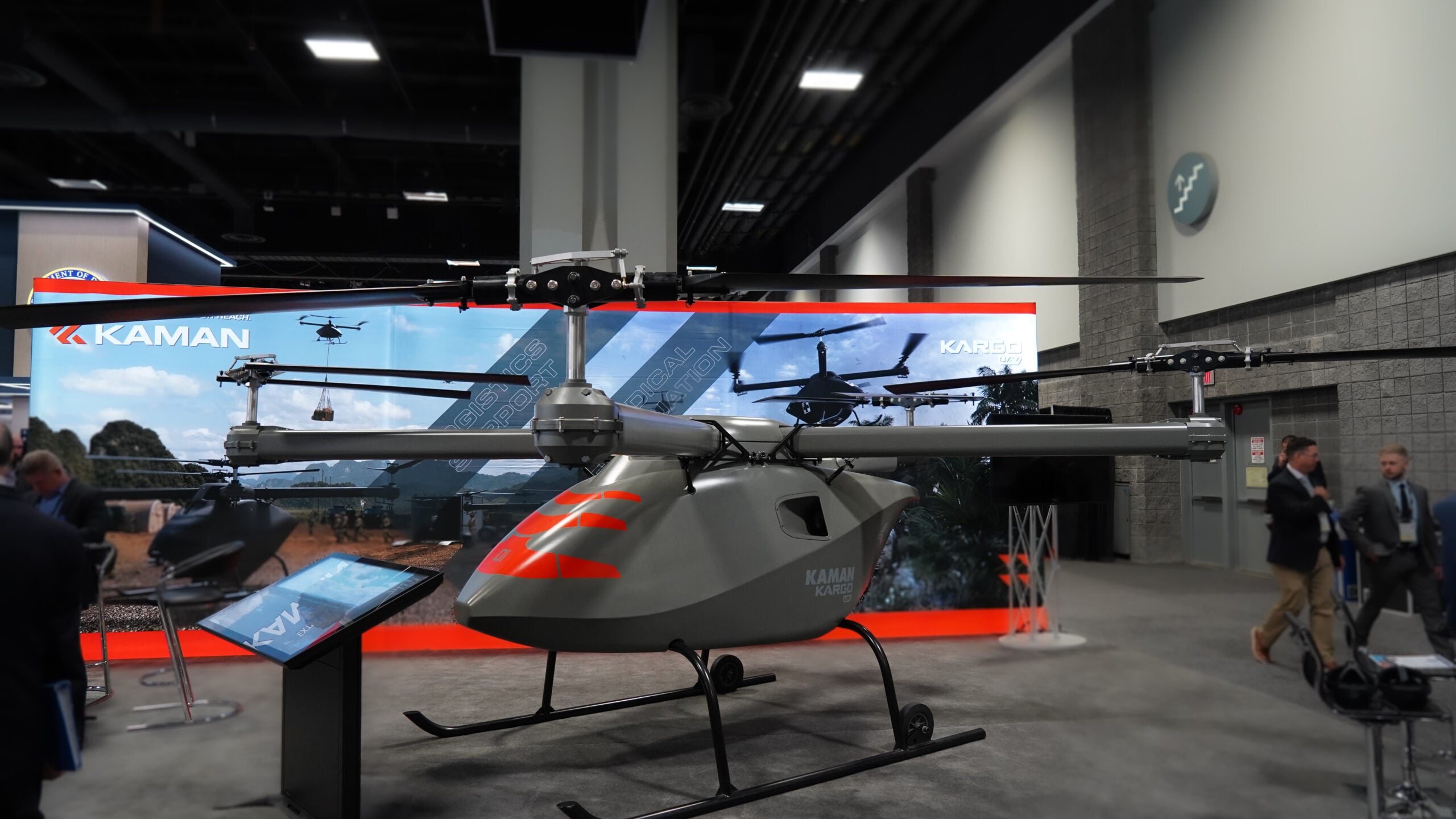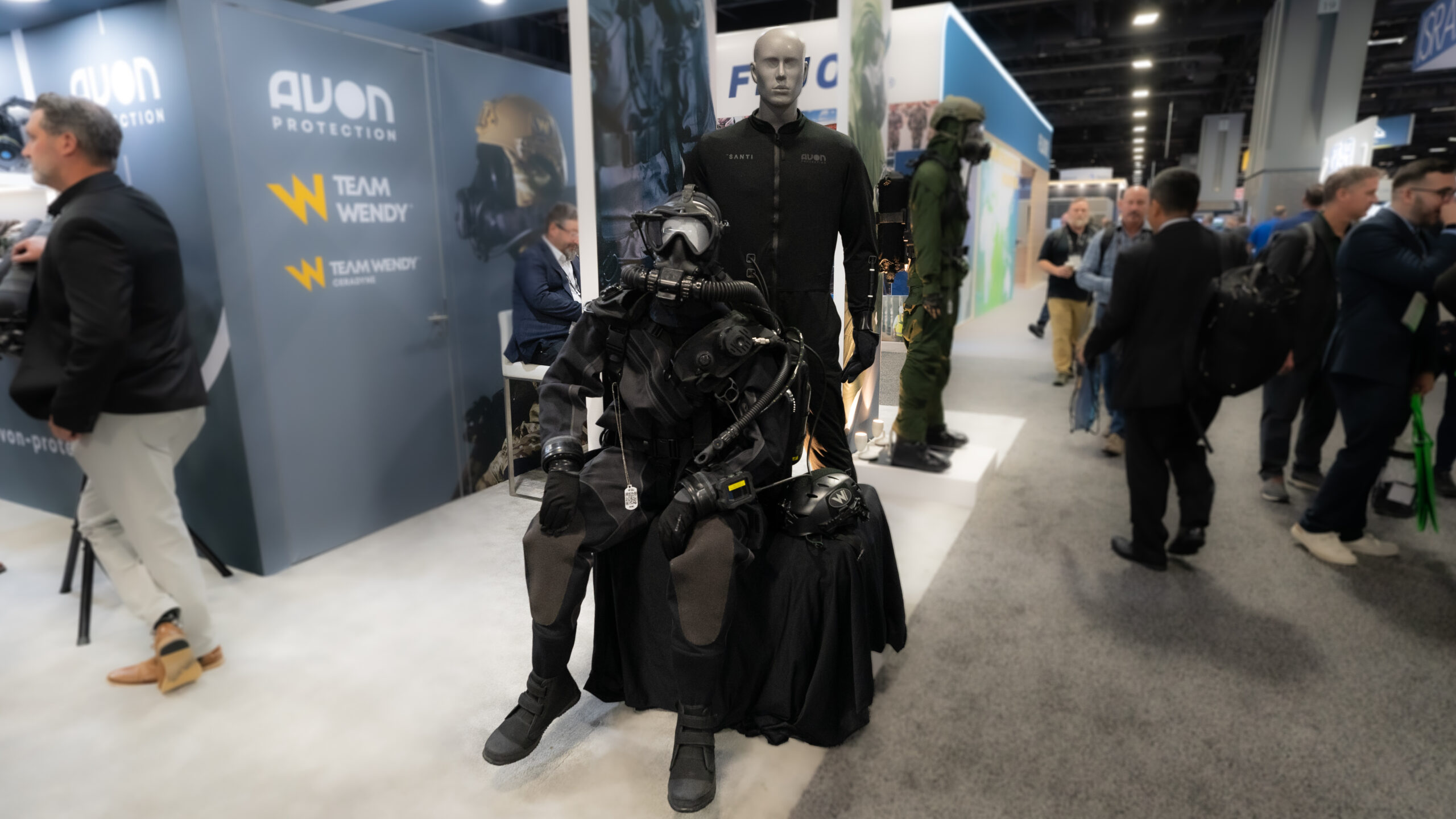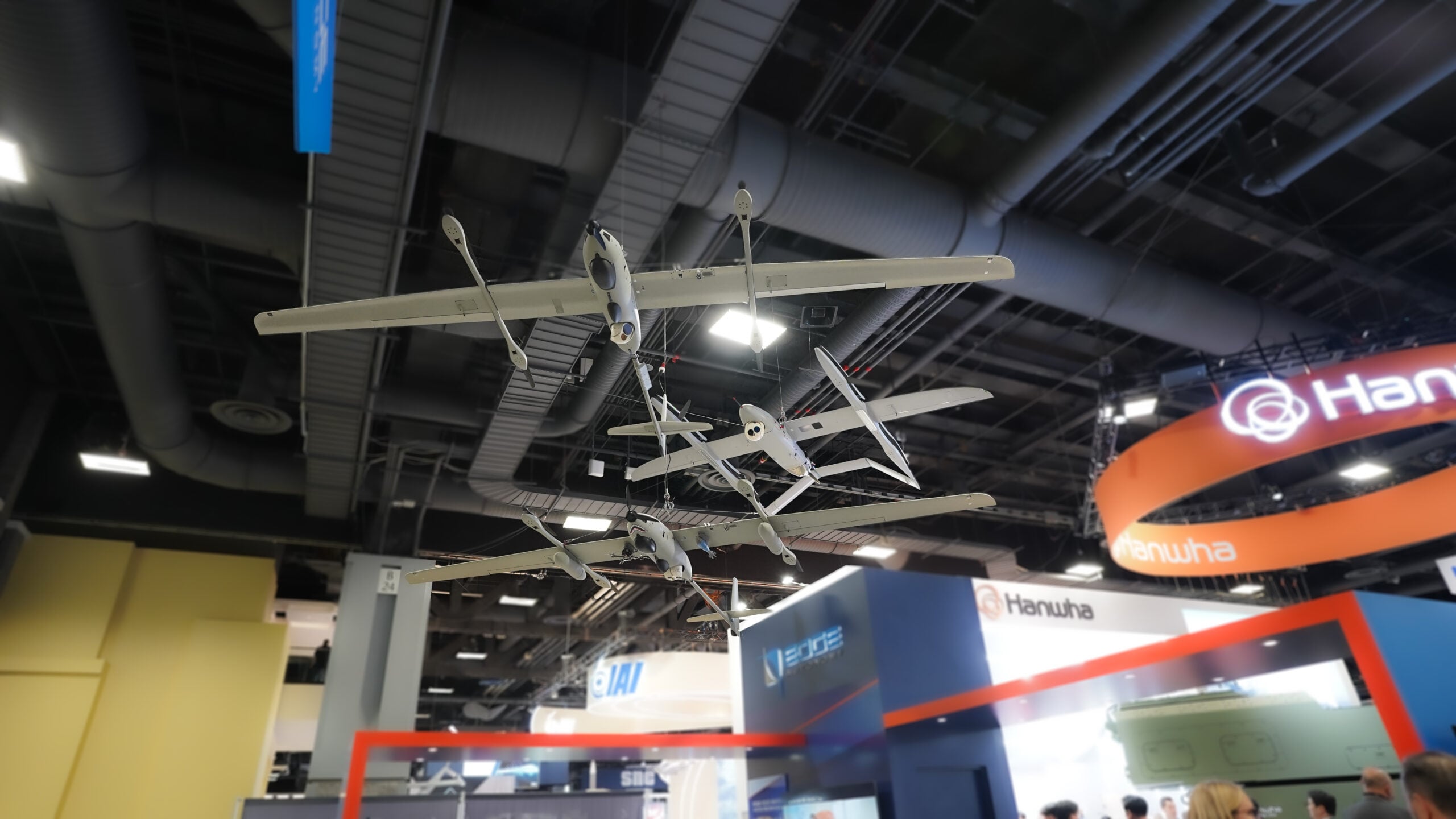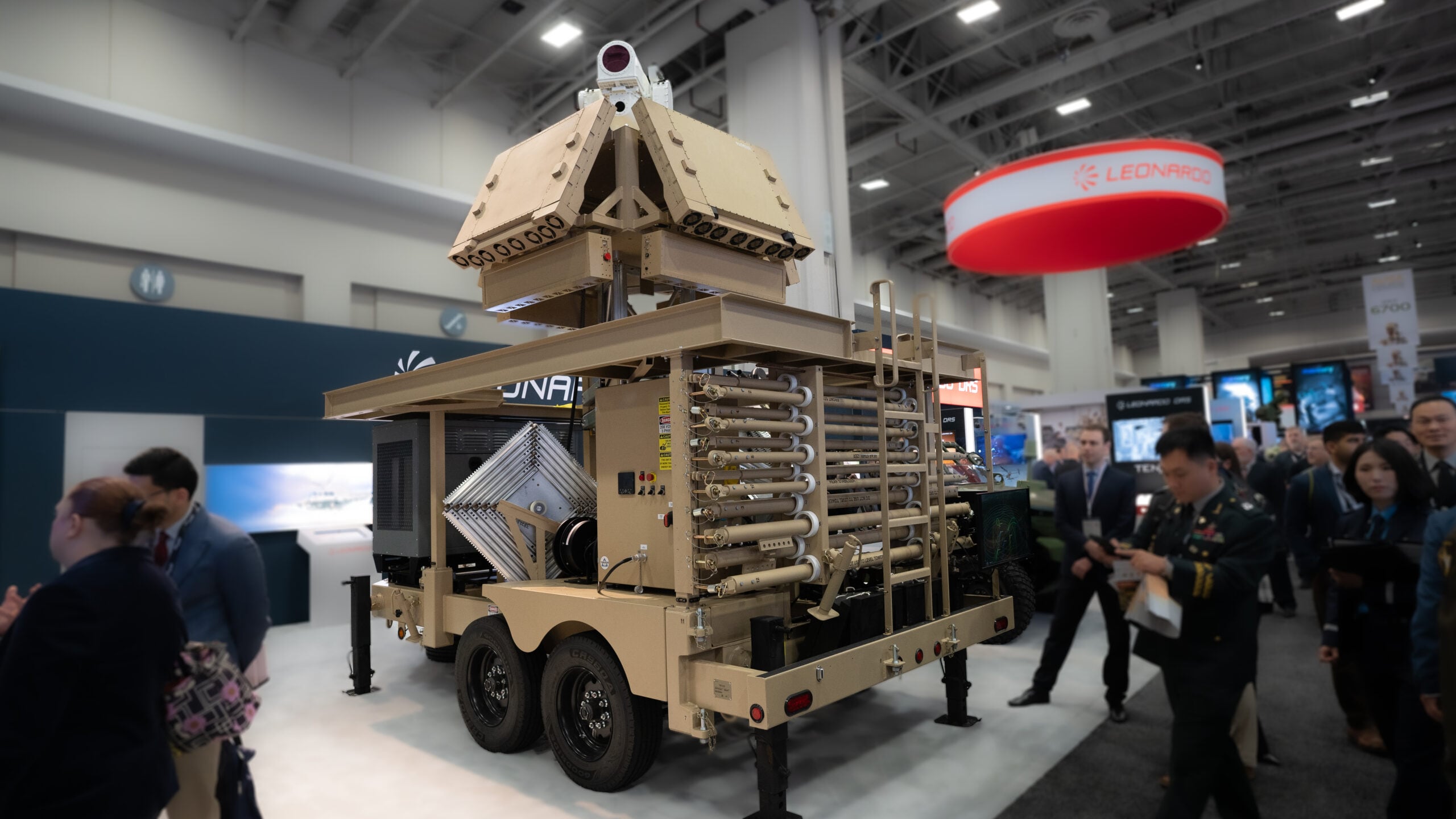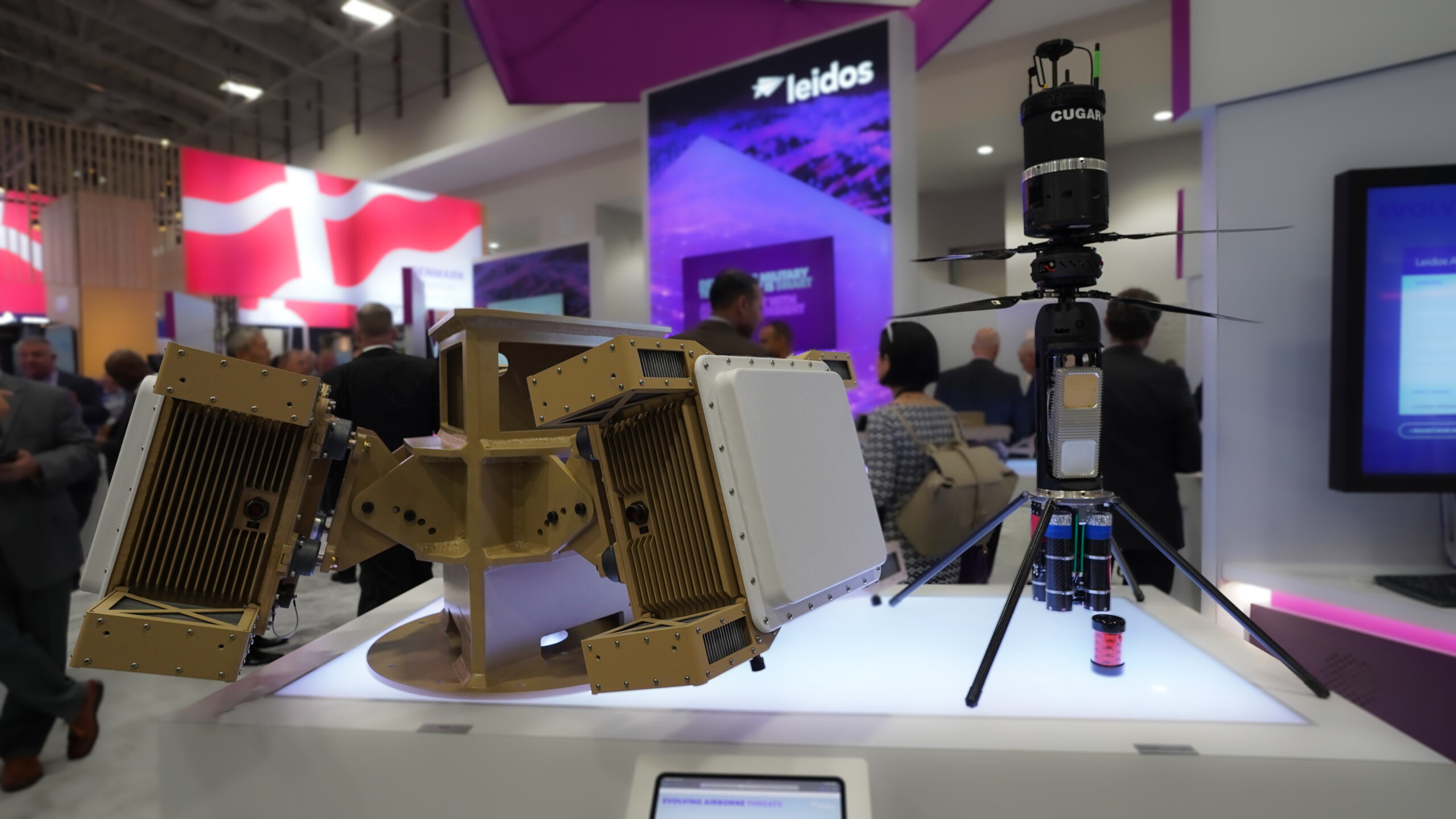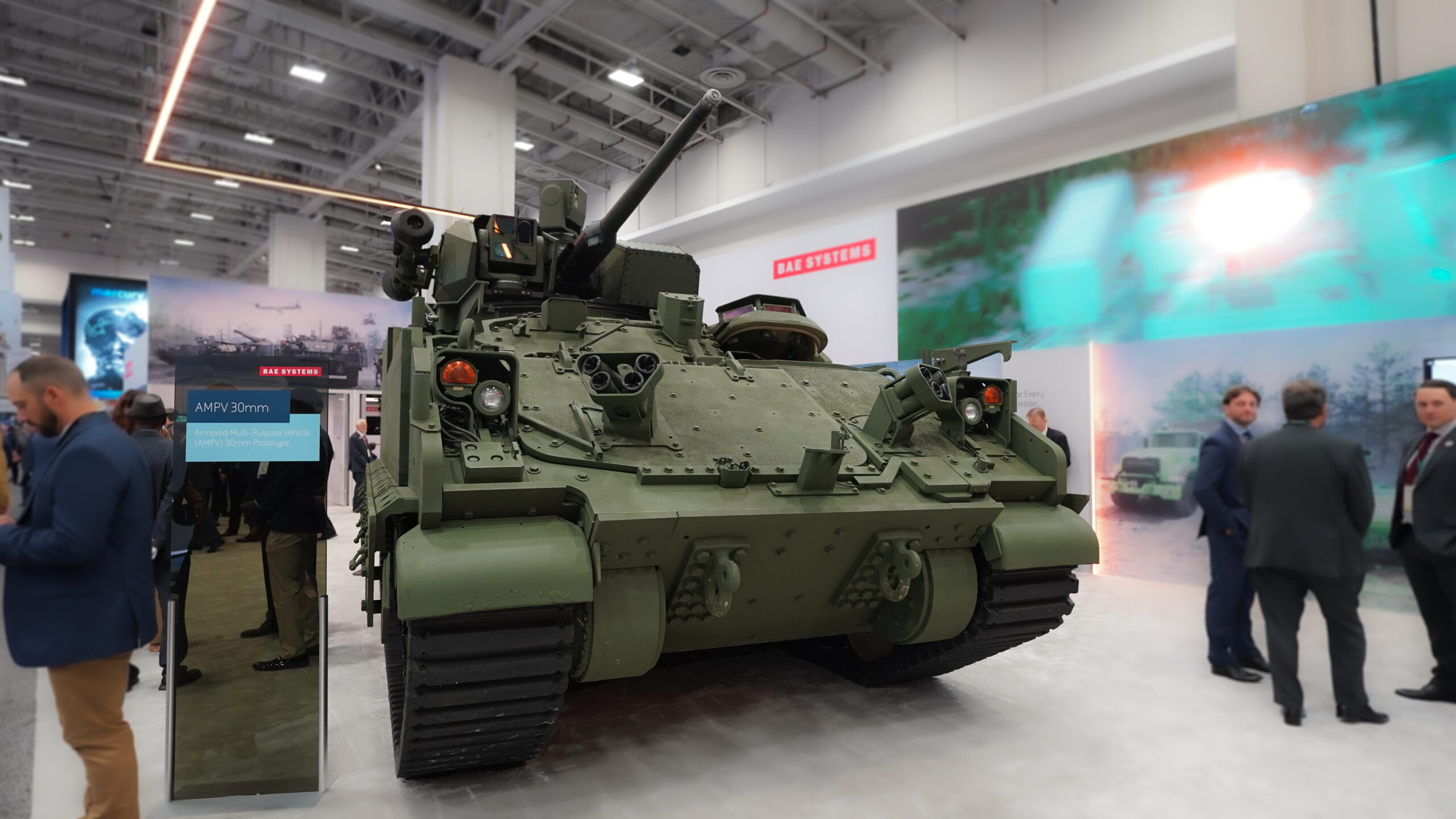
AUSA 2024 — Defense tech startup Anduril Industries today continued its streak of new product launches, unveiling a vertical takeoff and landing quadcopter dubbed “Bolt” that’s already on order with the Marine Corps.
Weighing roughly 12 to 15 pounds depending on configuration, the small, portable drone can be launched by hand and fly roughly 20 kilometers, with an endurance of over 40 minutes, according to Anduril. The base Bolt configuration can conduct intelligence, surveillance and reconnaissance missions or search and rescue, while the armed Bolt-M can deliver an explosive payload of up to three pounds.
“We’re not just kind of rolling this out of the lab for the first time,” Anduril Chief Strategy Officer Chris Brose told reporters Wednesday ahead of the announcement. “This has been something that customers have seen and evaluated and tested and used.”
The Bolt is specifically on contract for the Marine Corps’s Organic Precision Fires-Light (OPF-L) program, being one of a “handful” of systems under evaluation by the service, Brose said. He added that the Bolt will be tested over the next six months to inform a potential acquisition and fielding in fiscal year 2025.
Regardless of the outcome for OPF-L, Anduril believes that “[t]here are multiple global military organizations and programs where Bolt-M is aligned to existing requirements, and we expect the number of relevant programs and opportunities to increase significantly in the coming years,” the company told Breaking Defense. “In round numbers,” Anduril says that “typical Bolt configurations are in the low tens of thousands of dollars,” though that largely depends on payloads and configurations.
Additionally, pointing to the proliferation of relatively cheap, commercially-derived first-person drones in modern conflicts, Anduril argues that Bolt helps fill the US’s need for similar weapons with the help of the company’s Lattice software. The Bolt quadcopter can fly autonomously and be operated manually in GPS-denied environments, Anduril says, with features like customizable engagements.
When in data collection mode, the platform can share information across Anduril’s other platforms and those belonging to third-party vendors to enhance awareness of the battlespace, according to the company. And if an operator using the Bolt-M configuration decides to strike, the weapon can guide itself to the target even if it loses connection with the operator. The Bolt-M can also fly back if an operator decides against attacking a target.
“What we are doing with Lattice is deliver[ing] as much autonomy across that entire kill chain to put that human being on the loop so that they can make better decisions faster,” Brose said. “It’s the processing and fusing of sensor data that’s coming off of those sensors or those vehicles, whether Anduril will build them or others do. It’s the actual orchestration of those systems.”

